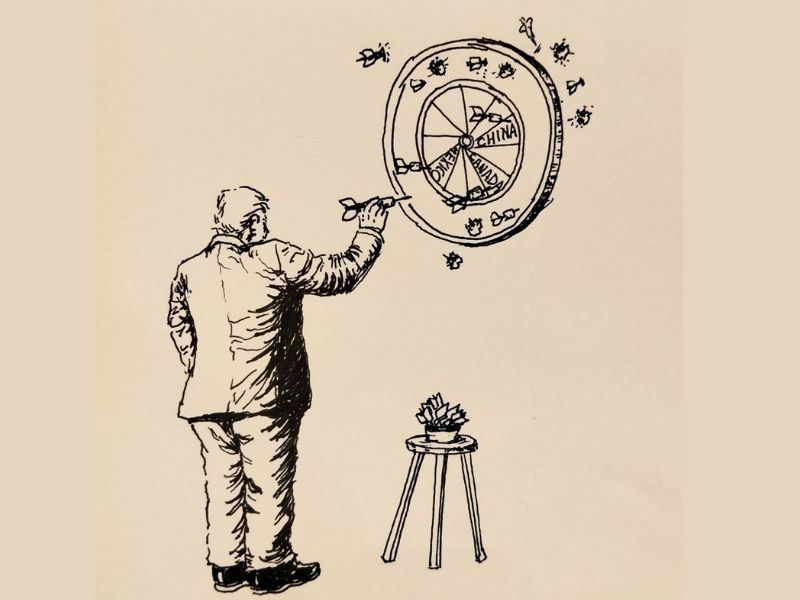.png)

Ajay Srivastava, founder of Global Trade Research Initiative, is an ex-Indian Trade Service officer with expertise in WTO and FTA negotiations.
February 14, 2025 at 7:43 AM IST
Prime Minister Narendra Modi and US President Donald Trump met at the White House on Thursday. The meeting comes amid escalating tariff threat by the US, some of which have already been announced. Another, expected in April, deals with reciprocal tariffs, a global tit-for-tat kind of arrangement.
The reciprocal tariffs, if implemented, may not harm India due to the structural differences in the export profiles of both countries. If the US were to impose a 50% tariff on Indian pistachios in response to New Delhi’s similar tariff on the fruit, India would remain unaffected, as it does not export pistachios.
For 75% of US exports to India, the average tariff is already below 5%, minimising the impact of any reciprocal measures. In contrast, Indian exporters face steep US tariffs on labour-intensive goods such as textiles, garments, and footwear, ranging from 15% to 35%.
The global trade system, built over 75 years under WTO principles and fully endorsed by the US, is being disrupted under Trump’s leadership. India may choose to wait for the US decision in April and respond in equal measure, much like it did in June 2019.
One of the major issues with the proposed reciprocal tariff policy is the lack of clarity on whether it applies to specific products or entire sectors. A White House fact sheet from highlights selective comparisons, stating that the US average Most Favoured Nation tariff on agricultural goods is 5%, while India’s is 39%. It also points out that India charges a 100% tariff on US motorcycles, whereas the US imposes only a 2.4% tariff on Indian motorcycles.
This selective framing allows the US to shift criteria as per convenience, undermining transparency in trade policy. If the US genuinely seeks tariff parity, it must choose a clear methodology—either by product or sector. Otherwise, a broad application of MFN tariff cuts could end up benefiting China, the largest global supplier of industrial goods.
Trump and Modi are said to have discussed trade relations, immigration, military sales, nuclear technology among other key issues. The two leaders also talked about a trade agreement, but the details remain unclear.
However, this is not the best time for a full-fledged free trade agreement, as the US has shown little respect for such commitments. An example is how Trump imposed tariffs on steel and aluminum imports from Mexico and Canada, violating the very terms of their trade pact. This raises questions about the consistency of US trade policy and its long-term credibility in international agreements.
Beyond trade, Trump stated that the US aims to become the largest supplier of oil and gas to India. While this could be a welcome move, any long-term commitment from India will depend on the US offering competitive prices compared to other global suppliers. Energy trade is driven by market dynamics, and India will buy from where it gets the best deal, irrespective of political considerations.
As both nations move toward the April deadline for a potential trade announcement, India appears to have the upper hand. Reciprocal tariffs, if implemented arbitrarily, could disrupt US supply chains more than they impact Indian exports. The key for both sides will be to engage in transparent and fair negotiations that align with long-standing global trade norms rather than short-term political calculations.




